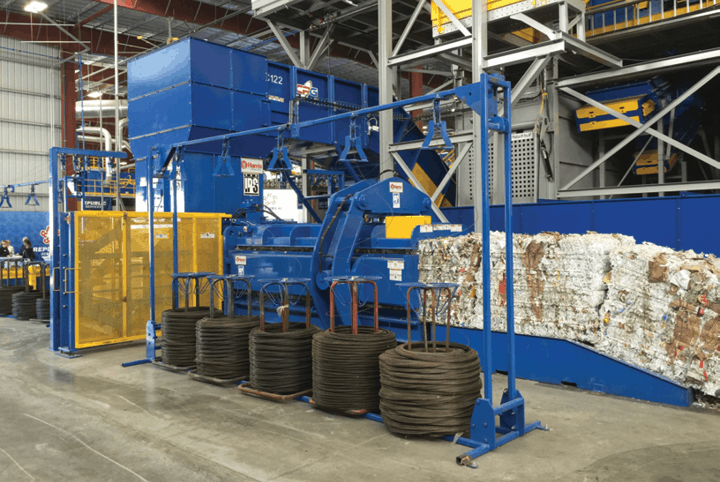Industrial balers are crucial components of the current waste management and recycling industries as they help consolidate various materials into easily manageable balls. These machines are used in revenue and distribution, manufacturing industries, and recycling plants.
These include:
Vertical Balers
There is the vertical baler that is small in size and can work well where space is a limiting factor in a given workplace. They work like a vertical bale where materials are compressed into bale form.
These balers are commonly used in workshops, supermarkets, godowns, small scrap dealers, and recycling industries. Vertical balers are also suitable for materials like paper, cardboard, plastic films, or fabrics in the form of secondary sorter waste. This type of machine is easy to manage and maintain and is thus recommended for companies or organizations that handle moderate to low volumes of scrap.
Horizontal Balers
A horizontal cardboard baler is larger than vertical balers and has greater power to handle more loads of materials simultaneously. Techniques on them compact materials in breadth, which ensures feeding at one particular point throughout the baling course of action and bigger bale production than in the vertical baler.
These balers are normally employed in large recycling companies, warehouses, production facilities, and anywhere else that requires the effective suppression of a large number of cardboard boxes, papers, plastics, and metals. These balers are more costly initially and occupy more area; however, they can work faster and are adaptable to diverse situations.
Closed-End Horizontal Balers
Horizontal balers are another category of cardboard balers designed to compact material into a completely enclosed bale where the bale form is created in the Baler Chamber only; these are known as closed-end horizontal balers. Closed-end balers are very useful types of balers since they retain their contents during the compression and transportation and these are some of the ways through which the closed-end baler is useful, particularly when dealing with loose and relatively ‘messy’ materials like the MSW, RDF, and some industrial waste types.
Closed-end balers are preferable forcentersrequiring compacting wastes and low demands of exposure and stench.
Open-End Horizontal Balers
Closed-end horizontal balers tie a knot at the end of the bale, while open-end horizontal balers create bales with one end left open and are easily accessible for untying or stacking. These balers are ideal for twenty-four-seven operations for recyclables such as paper shreds, cans, and PET bottles. This type is very flexible and can be used with different bale sizes according to the nature of the material handled andthe operations conducted.
Two-Ram Balers
Two-ram balers are modern and efficient equipment for baling all types of material, including materials with high or low density and varying dimensions. In contrast to the standard balers, which have the usual ram to compress the materials used, the two-ram bales have two individual rams that do both the compression and the subsequent ejection of the material.
This design allows them to easily handle large-size items like plastic containers, foams, and thick cardboard cartons. Two-ram balers prove advantageous in bale size and density adjustments, making them suitable for applications in multiple recycling organizations and facilities requiring higher bale requirements.
Final Thoughts
Several industrial balers are different, and a specific type is selected for use depending on the material used, the baled volume, the space available for storage, and the operation needed for the next step in the production process. These distinctions enable organizations to choose the kind of baler to apply to control their waste and recycle appropriately.


